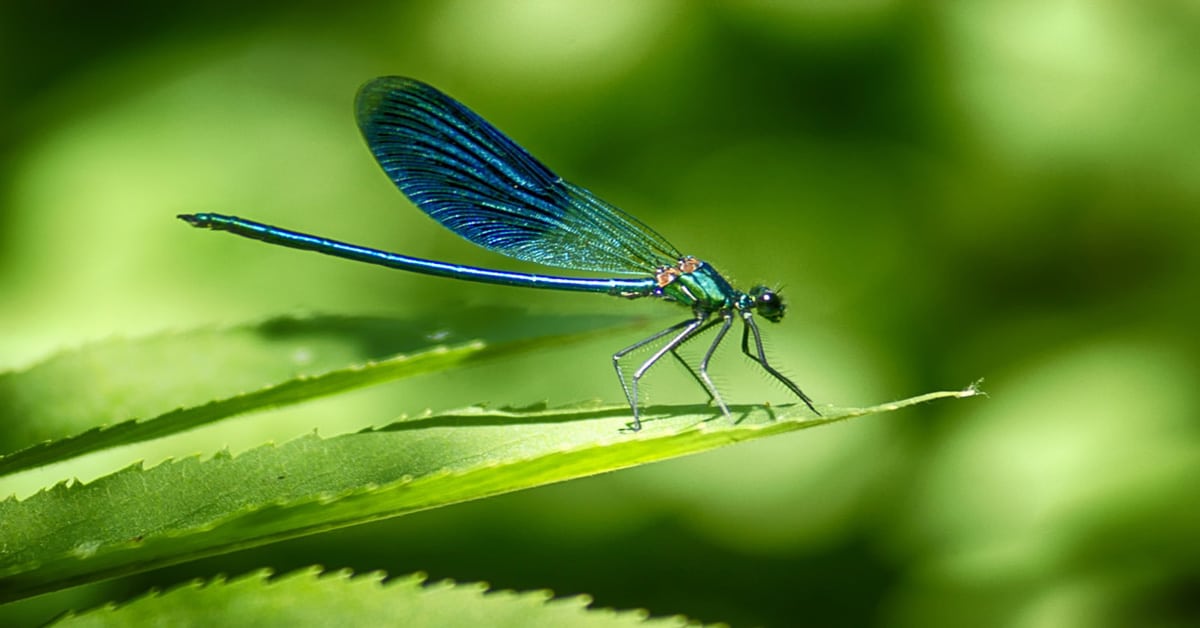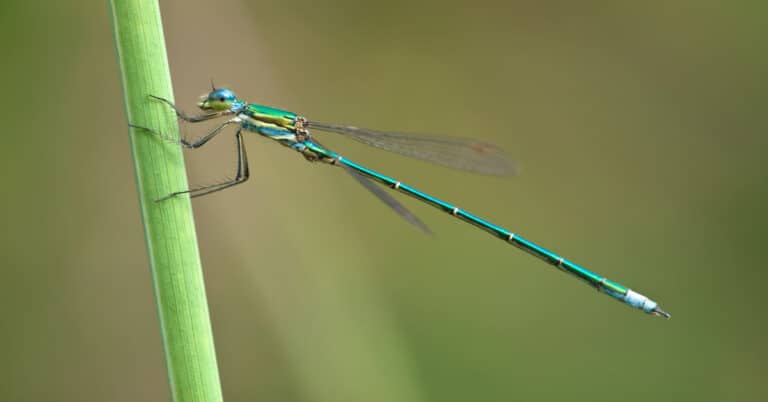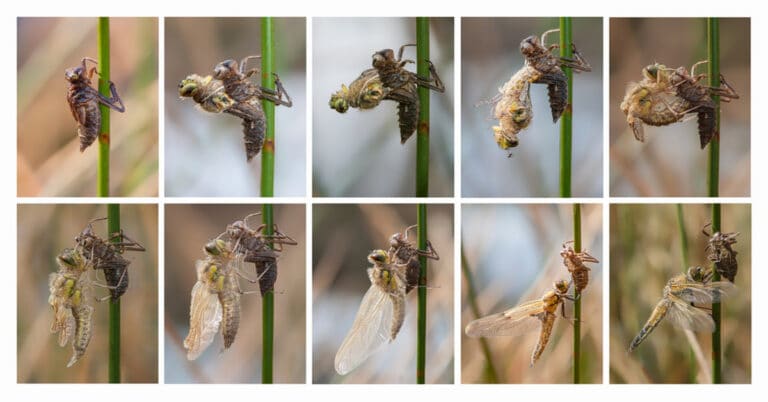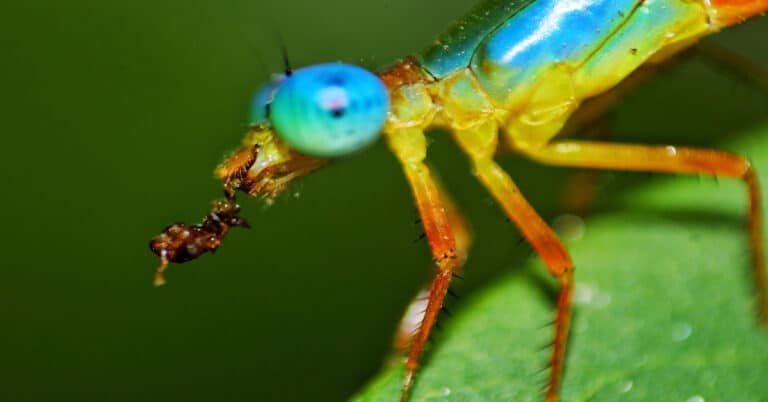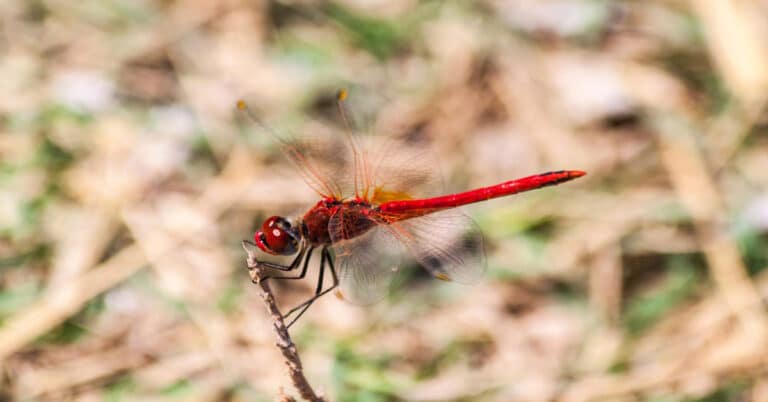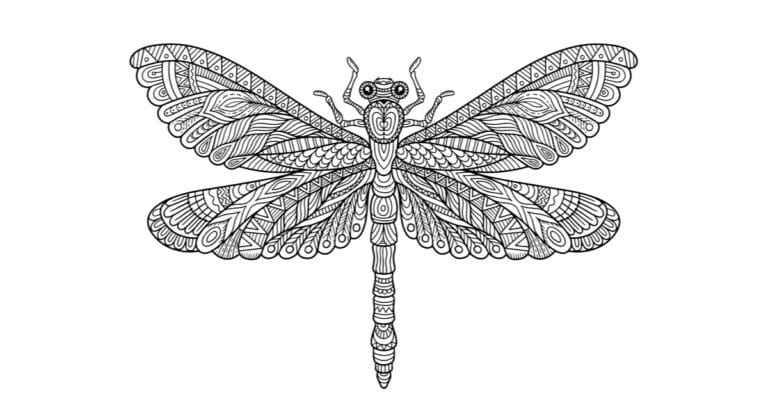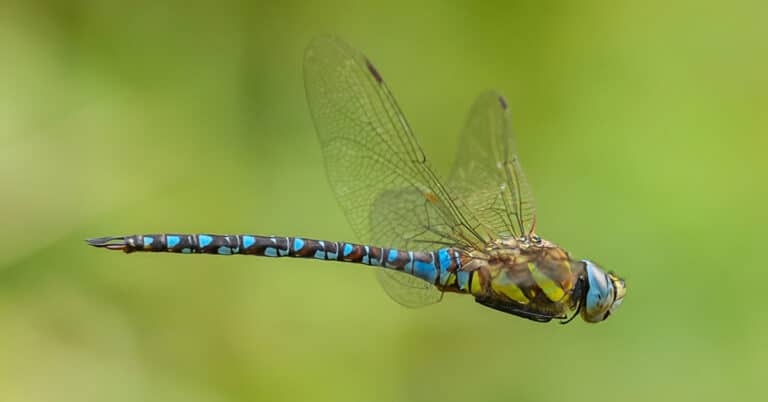Dragonfly – One Of Nature’s Most Intriguing And Fascinating Insects
One of Nature’s most intriguing and fascinating insects, and the subject of mankind’s most sublime and ridiculous myths and mythologies, the dragonfly darts around going about its business as usual, blissfully unaware and oblivious to the interest it has generated in us. And perhaps thankfully for us because if the dragonfly were to understand that we have called it the “Devils darning needle” and “gwas-y-neidr” or the Adder’s Servant, it could laugh long and hard at us…and considering the dragonfly has been around for over 300 million years, it could be a really, really long laugh.
The primary fascination that humans have had with dragonflies is because
- Of its ability to seek out pure water
- Of its ability to Reflect multiple colors with changing angles of light
- Of its awe inspiring flight and speed
- Of its ability to almost single handedly control insect populations
- Of its ability to adapt to change with indescribable ease
- Of the way it lives out its adult life, living each moment to the fullest
We have specific pages dedicated to the different aspects of the dragonfly in this website and lots of information and trivia associated with this fascinating creature.
To give you a heads up, while dragonflies were almost deified as the souls of the dead in Native American culture and heralded as symbols of purity and change, they were symbols of victory, power and prosperity, and the native Burmese (now Myanmar) regularly released dragonfly nymphs into the water surrounding their settlements to control the populations of Yellow Fever causing mosquitoes.
Dragonflies are natural and seriously efficient predators and can deliver a telling blow to insect populations in areas that they are present in good numbers, so much so that normal people are saved from most mosquito-spread diseases, and bee keepers consider dragonflies as a pest.
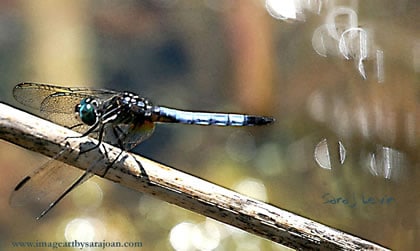
Biology
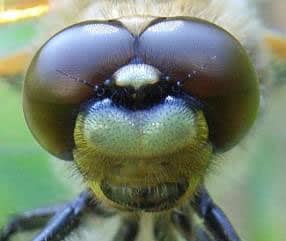
The dragonfly, owing to its position in the food chain, is not scared…so if you find one flying over to you and sometimes looking you in the eye for a few moments, don’t be surprised or shocked. It’s what it does…look with its 30,000 eyes, to find food and mates. Oh, while 30,000 is an approximate number, it is the number of ommatidia that dragonflies have within their compound eyes.
Like all arthropods, dragonflies have compound eyes – only, they are a little more specialized, suited for a born predator.
When dragonflies see, they don’t exactly see…they more sense. Sense movement at a much wider angle than any human could even imagine. The reason being, its eyes are ball-like and see at a complete 360 degree span. Each Ommatidia, called Ommatidium in singular, is an eye in itself, capable of seeing anything right in front of it. This helps the dragonfly sense movement anywhere around it.
Furthermore, the dragonfly has a flattened area right in front of its eyes with a concentration of eye cells that see directly in front. This helps it see the little mosquito as it flies around, so it can home in on its meal. Other predators of the Arthropod family like the Praying Mantis and the best fliers like bees have similar flattened fronts to help them see better, as they fly.
The body of the dragonfly is supported by two pairs of extremely powerful wings that help it float at the slightest breeze and can flap fast and hard enough to hover even against a strong head wind. Here again, although its wings are transparent and seem quite frail, you’ll find they’re a whole lot stronger than they might seem at first sight. The construction of my wings and the fact that they are not jointed like those of butterflies, and can operate independently, helps the dragonfly fly and run a neat little air show on its own, capable of flight in all directions, up, down, left, right, forwards and even backwards. Nope, the hummingbird is not the only one that can go on the reverse gear.
The surfaces of dragonfly’s wings are not smooth. They have small pocket like ridges that catch even the slightest gust of wind to take flight. Although the rough surface poses a certain degree of aerodynamic drag, the dragonfly can move fast enough, and more importantly, have enough control in flight to make sure if it catches sight of its meal, it’s as good as eaten. Not many an insect escape its six legs once the chase begins, as it out-flies the prey and grabs it using its legs to eat them at ease. To make it as simple as possible, the legs are positioned in such a way that they form a pouch like shape. This helps grab prey leaving them with very little chance of an escape.
As the dragonfly flies a lot, it needs to both heat up and cool off and hence, the famous Obelisk pose. The muscles that flap its wings need to be warm at all times.
Coming back to the Obelisk, dragonflies bask in the sun as much as possible when they need the heat. And when they need a little breather from the warmth, they position their bodies in such a way that it makes little or no direct contact with the sun’s rays.
They also do something quite similar to catch the warmth of the setting sun. Same pose, vastly different purposes.
This is about the biology of the beautiful dragonfly. If you want to know more about the lifecycle of the dragonfly, what it eats or what the dragonfly symbolizes, check out the pages dedicated to each.
Different Types of Dragonflies
Blue Dragonfly
The Blue Dragonfly, also called a blue dasher, is found mainly in northern America and the Bahamas. They come from the Skimmer family. Even though the name means “long wings,” their wings are not the longest compared to the other types of dragonflies. They have a shorter abdomen, and all that makes the wings look longer.
Blue dashers are an average of 25–43 millimeters long. The male has an exceptionally beautiful and vibrant blue color and yellow stripes on the thorax. They also have metallic green eyes. Females are not as colorful as male blue dashers. Just like males, they have a yellow-striped thorax, but the abdomen has more of the brown and yellow stripes. The eyes of female dashers are red. The insect that gets mostly mistaken as a dragonfly is actually a damselfly. However, damselflies have a different shape of wings and other features that set them apart.
Green Darner Dragonfly
Green Darners are considered to be one of the largest types of dragonflies found regionally. The length of its wingspan goes up to 80 millimeters. It looks like a darning needle, and the name comes from this resemblance.
The Green Darner belongs to the Aeshnidae family. They are especially common in North America. However, they mostly migrate to Texas or Mexico. The Green Darner Dragonfly is actually an official insect of Washington State. Those winged bugs are very beautiful creatures. They have a green thorax, and if it is a male, a blue abdomen, and if it is a female, more of a brownish one. During the day, they are present and are aerial.
Red Dragonfly
Another mesmerizing creature of our nature is the red dragonfly. They are one of the most beautiful types of dragonflies. If you look at pictures of red dragonflies or if you have ever seen them, it is impossible to not be amazed by their uniqueness. They are also known as Red-Veined Darters. In its main location, the red dragonfly is located in the southern parts of Europe, and in later years, it became common in Ireland and Britain.
They are very different from their own species in their behavior and genetics. They can be 38-40 millimeters in length. Males have a red abdomen that is relatively brighter when compared to other species. The wings have red veins, and some parts have yellow in them. Female dragonflies of this species almost look like males, but they have yellow veins and the abdomen also has a yellow-shaded color.
Eastern Pond Hawk
The Eastern PondHawk is also known as Eythemis Simplicicollis. They come from the Libellulidae family. Most are widespread in the USA and southern Canada. You can even guess from its name that its habitats are mainly ponds and still waters. The colors of females are bright green, and they have a banded abdomen. The males are a little different and have a blue abdomen, a green face, and a green thorax. Nymphs have green eyes and their skin is olive green.
Eastern Pond hawks have earned their name; they are great hunters and swift-flying predators. Just emerged dragonflies fly away from the water and hunt there for around two weeks. After two weeks, they return, and the males mark their territories and prepare egg-laying sites. There are also satellite males. They remain near the egg-laying sites and wait for an opportunity to intercept females.
Dragonfly Life Cycle
The appearance and habits of dragonflies change depending on which life cycle they are in. They are hemimetabolous insects. The dragonfly life cycle has three distinct phases. Ever wondered how long do dragonflies live?
Eggs need around one week to hatch, and then they go into the nymph (also called larvae) stage. The dragonfly larva stage is the longest in the dragonfly life cycle. They spend most of their lives in the nymph stage and live underneath the water surface. The nymph stage mostly lasts up to five years, while the actual adult stage can only be around five weeks or much less, depending on the species.
The next dragonfly life cycle is the adult stage. When the dragonfly larvae are ready to transfer to another stage, they stop eating and go up to the surface of the water. Mainly, this happens at night. The nymph stays out of the water to adapt to the air and breathe. After it gets used to the oxygen, it slowly moves to the nearest available plant. After that, the scary and painful stage comes. The skin has to split behind the head. After splitting, an adult dragonfly comes out. Then, for some time, it stays on the skin and allows the skeleton to harden. At this stage, they swallow a lot of air that goes into the wings and allows them to an extent.
There are two main groups of dragonflies: spring species and summer species. Spring species come out during spring and disappear soon, until the following spring. The summer species come out later in the year and stay for a period of weeks or months.
What Do Dragonflies Eat?
Dragonflies are considered to be one of the swiftest hunters. They can guess and predict the movements of their prey really well. The insect has a complex neurological system and can do pretty accurate calculations, helping it hunt for its next meal easily.
One of the most vicious predators on earth are African dogs, and their success rate when they work together goes up to 67%. However, who would have thought that a small, beautiful creature such as a dragonfly could be one of the greatest hunters on earth? The success rate of hunting is pushed up to 95%.
Wondering what do dragonfly eat? Well, apparently, adult dragonflies mainly eat a wide variety of insects, and they are very carnivorous. They can eat mosquitoes, moths, butterflies, damselflies, and even small dragonflies. Yes, they eat their own species too. An adult dragonfly bits larger prey on the head knocks them out and carries them with its legs. In a day, the adult dragonfly can eat a fifth of its body weight.
As long as they are smaller, dragonfly larvae are not less predatory and they can eat most living things. Mostly, they eat bloodworms and insect larvae, but they can also eat tadpoles and small fish. Some species of nymphs may also come out of the water at night to eat.
Living Habitats of Dragonfly
Dragonflies have a special connection with freshwater ecosystems. Their living environment, system, and behavioral changes depended on their lifecycle. However, these cycles help them adapt to the environment and survive.
We can see different types of dragonflies all around the world, except Antarctica. Different species have different living conditions. For example, some can live at higher altitudes, such as 3700 meters above sea level. Some can live in the deserts; some can be found even in Alaska, within the Arctic Circle. The most widespread species of our beautiful creatures is the Globe Skimmer (Pantala Flavescens).
The differences appear between the females and male dragonflies too. In breeding habitats, the number of males is high. Actually, females are often harassed by males, so they try to avoid the area. The male population is mainly represented in the wetlands when the females are living in more of the dry meadows. Only at the time of breeding do they migrate to the wetlands to find partners and lay the eggs.
Reproduction of Dragonfly
The reproduction of dragonflies is a pretty complex process. The male attracts females to its seized territory. Then the male grasps the female and they continue to fly in tandem. During this process, the semen is then passed from male to female. When flying in tandem, the male is mainly in front. The pair can also be described as “in a cop”.
In the process of laying eggs, the female taps her abdomen either on the water surface or on the vegetation, “shaking” the eggs out of the abdomen. The eggs have the shape of rice. The number of eggs can be up to 1500. A very interesting fact about dragonflies is that when the female lays eggs, the males guard the females they just mated with. They mostly stay linked to them or fly as close as possible to them and pay attention.
Protecting Themselves from Predators
Dragonflies, mainly males, are very territorial creatures. They defend their territory from their own species or other insects and predators. Also, they love to defend their breeding territory, especially against the dragonflies that live near the pond. Males normally find insect-rich grounds, and they try to maintain their rights to alight there. Some species signal ownership through the following actions: they strike colors on the face, legs, wings, or abdomen.
Despite the fact that dragonflies are really fast and agile fliers, the threat to them is real, and predators can be fast enough to catch them. The predators include falcons, flycatchers, nighthawks for adults and ducks, frogs, fish, and water spiders for larvae. Some wasps also hunt dragonflies and use them as nests for their eggs. Dragonflies are mostly haunted by parasites: water mites and gregarine protozoa.
The Symbolic Meaning of Dragonfly
Dragonflies are beautiful creations of nature. They have had a different meaning for centuries now, and dragonfly pictures are represented in different artifacts such as pottery, paintings, jewelry, etc. The symbolic meaning of a dragonfly in Japan is strength, courage, and happiness.
TThese winged bugs are symbols of the autumn season. They are frequently mentioned in Japanese literature and art. In Chinese culture, it is a symbol of change and instability. So, there are dragonfly statues everywhere, in offices or at homes. Believing that it brings positive changes, many people get tattoos and share their pictures. There are many animations and dragonfly clip art on the internet that everybody can enjoy.
Just like in Indonesia, Native American tribes consider dragonflies to be medicine animals and believe that they have special powers. Adult dragonflies are considered a delicacy. In Europe, our beautiful insects are considered sinister.
In some cultures, the symbolic meaning of the dragonflies is different, and they are also called “the snake doctor” or “the snake feeder.” People believe that the dragonflies go after the snakes and cure them if injured, and they catch the insects to feed the snakes. Nobody knows where this is coming from exactly. In recent times, dragonfly watching has become a popular activity in America, especially among birdwatchers who are interested in and observing the new groups.
Dragonflies have always been a part of the culture. Not only are they very unique creatures, but they are also very beautiful. There are many dragonfly books, such as Dragonfly’s Tales, loved by many people. They are also very popular with children, and many books have dragonfly coloring pages for kids.
Impressive World of Dragonflies
Dragonflies are one of the world’s most interesting creatures. Not only are they very beautiful, but they also have a super adaptable body plan. Their anatomy helps them survive in the wild. The forms of ancient dragonflies are actually very similar to modern ones. However, it is very interesting how these amazing creatures managed to stay alive and survive.
The earliest specimens of dragonflies are considered to be 300 million years old. The insects that look like dragonflies are called griffinflies, and they were found in the upper carboniferous rocks. The main threats to dragonflies are the loss of wetlands, which is the main living area for them. Today, there are over 3,000 extant species of dragonfly known today. Most of the extinct ones were tropical.
Compared with other species, dragonflies can be considered one of the most unique living organisms on earth. Their speed, flexibility, and hunting skills make them exceptional among all other creatures.
Dragonfly Facts
- Dragonflies don’t chase down prey. Instead, they observe them from the air and calculate the aerial ambush. They learn the speed and trajectory and intelligently and effectively attack the prey.
- They spend most of their lives in the water in the larval state. Some species can stay underwater as larvae for up to six years.
- Dragonflies are vicious predators. They can eat their own species.
- They have enormous eyes with more than 30,000 facets that provide 360-degree vision. Each of them brings information about the surroundings.
- They can move and fly in any direction. They can even fly sideways and backward.
- A very interesting dragonfly fact is that the species of Globe Skimmer (Pantala Flavescens) can fly across an ocean, mainly during the migration, and can cover more than 11, 000 miles.
- Dragonflies actually have teeth. They use their sharp teeth and feet for hunting. They can rip apart their prey.
- And finally, do dragonflies bite? No worries, they are not threats to humans. The majority of species can’t break our skins. And the ones that can, will not bite unless they are in a defensive state.

Having discovered a fondness for insects while pursuing her degree in Biology, Randi Jones was quite bugged to know that people usually dismissed these little creatures as “creepy-crawlies”.

